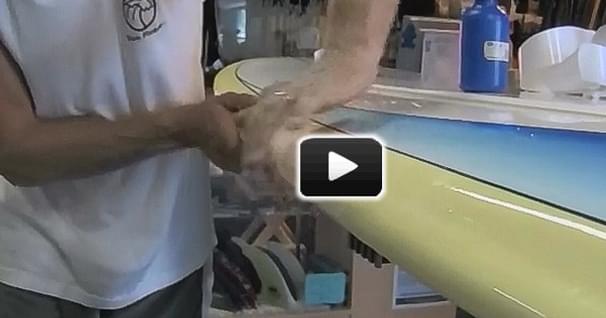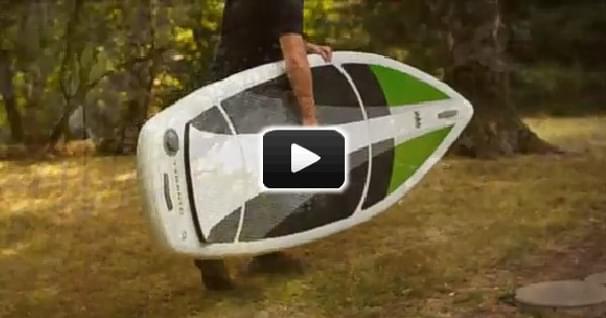How To Repair Dings on Stand Up Paddleboards
One thing you'll want to do is inspect your board after each use to make sure there's no dings or dents in the board. While this is highly unusual for BIC stand up paddleboards, you do want to make sure that there's no dings or dents that cause punctures into the core of the board. If this happens, water can slowly seep inside the board and damage the board. The good news is that most dings are fairly easy to repair.
The first thing you'll want to do is make sure your board is completely dry before attempting any repair. To do this, you'll want to keep your board out of the water, store in a cool dry place, ideally with low humidity, somewhere that you can make sure that the board completely dries so that when you do start to repair, there's no water inside the board. One trick that you can use to make sure that your board is dry on the inside, is to take a rolled up paper towel and insert it into the damaged area. If this paper towel wicks any water out of the core of the board, you'll know that it's not dry and it's not ready yet for repair.
The next step, after you ensure your board is dry, is to clean the area that's damaged and cut away any damaged material. You can do this using a utility knife and cut away any areas that are cracked or damaged. Next, you'll take some medium grit sandpaper and sand around the ding. What this does is allows the epoxy to hold once it cures. Next, what you'll wanna do is take a small amount of foam out from underneath the edge of the ding. What this does is gives the epoxy something to hold on to underneath the skin of the board so that when it cures, it's locked in there.
For small dings, the only things that you're gonna need are five-minute epoxy, a utility knife, a popsicle stick, and some clear packing tape. Once you've prepared the damaged area, now it's time to start mixing your epoxy. Once you've mixed the epoxy, take the popsicle stick and use it to completely cover the dinged the area with epoxy. You can take your clear packing tape and place it over the top of the ding. What this is gonna do is give your epoxy repair a smooth finish and reduce the amount of sanding you're gonna have to do once the epoxy has cured.
You'll want to wait at least an hour even if you're using five-minute epoxy. Some epoxies take longer, and this also depends on the weather and humidity conditions where you're performing the repair. Best thing to do is wait a full day if you can. Once the epoxy is cured, you can peel away the packing tape and sand down any additional excessive epoxy that may still be on the board. If you do wanna go one step further, you can paint the damaged area to match the color of the board.
Related Articles
Rail Tape is a good investment for your plastic or fiberglass board - it keeps it from getting chipped…
This video shows how to retrofit a Stand Up Paddleboard with a patented SUP Grip handle to make it easy…
Inflatable SUP boards are a fun way to get on the water. Use the rules of thumb outlined in this video…


